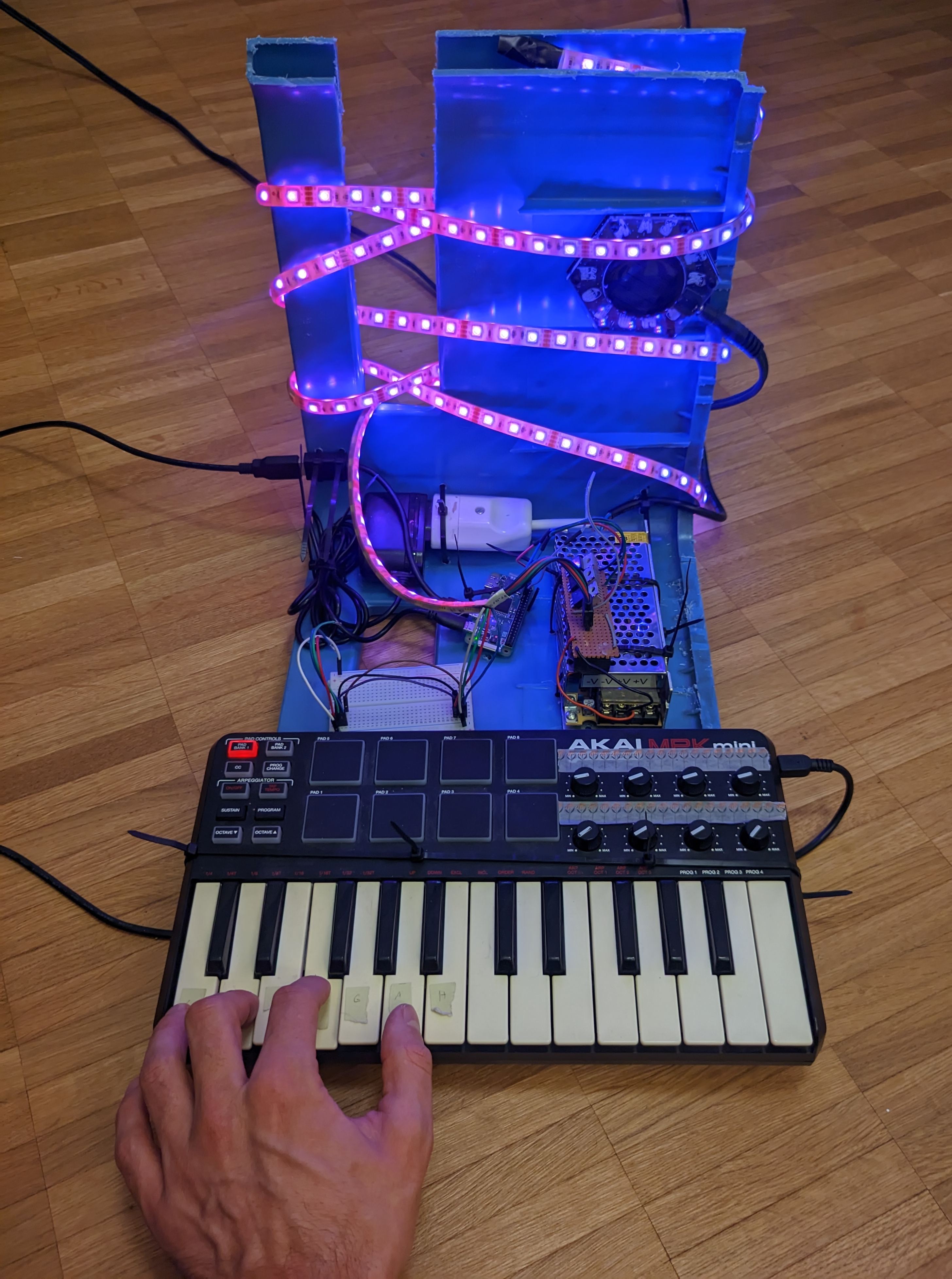lightsynth
2023 | LED strip, custom PCB, Raspberry Pi Zero
In the lightsynth a solar cell emits an audio signal depending on the way it is illuminated by a RGB LED stripe. At the heart of the lightsynth sits a Raspberry Pi Zero that reads a MIDI signal from an arbitrary source (in the configuration seen on the picture standard MIDI keyboard is used). An algorithm then converts the MID notes into the corresponding notes and frequencies. From these frequencies the corresponding waveforms are generated. At this step the timbre of the synthesizer can be influence by the operator through changes on various parameters such as duty-cycle and wave cycle length. The parameters can also be locked to the BPM on the MIDI signal.
As there are three light channels (RGB), this synthesizer offers 3-voice polyphony, meaning that at most three notes can be played at the same time. The generated waveforms are then used to drive current through the LEDs. The LEDs will alter between the on and off state at high frequencies, mostly undetectable by the human eye. By adding resistors, capacitors or inductances to the signal path, this conversion from the digital to the analog domain can again be influenced and filtered leading to changes in the synthesizers sound.
Finally, the solar cell picks up the light from the LEDs and surrounding and converts it to an audio signal. Depending on how much the solar cell is shaded from the environment, the sound this instrument creates is influenced by other lightsources and therefore sounds different depending on it's location.
